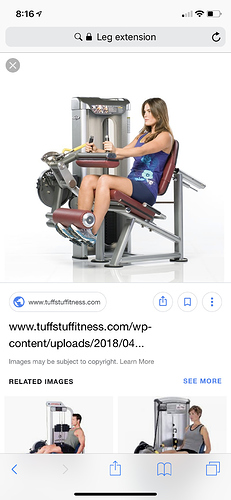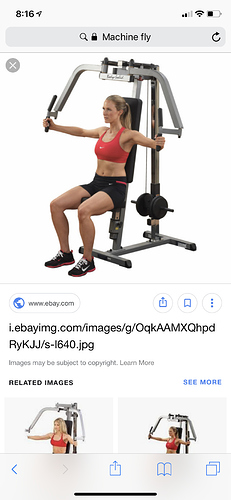Guru? No. But I have a few disjointed suggestions for you. I’m not a trainer or expert, but I’ve been casually involved in exercise (weight training, kayaking, skiing and bike racing) for 40 years. Let’s say I’m sure my advice is worth what you’re paying for it! 
The most controversial thing I’ll say: only do one set per day TO FATIGUE of each exercise! More is not bad, but you are basically wasting your time. There is a bunch of actual scientific literature (with grad students and everything) in kinesiology/exercise physiology. If you go look at that literature, it is replete with studies that show that one set DONE TO FATIGUE gives strength gains equal to the more traditional three sets. Of course, those studies are short-term. Maybe multiple sets actually help when you get more advanced or for people trying to “get huge,” but for starters (meaning, your first few months or whatever), do one set and move on to another muscle. You’ll get plenty of benefit from that one set, and save a huge amount of time. If you feel you’ve plateaued in the future, you can always add more sets then.
Note the emphasis on “to fatigue.” Lots of people will say “do 10 to 12 reps” or something like that. But that really should be “choose a weight at which you can only do 10 to 12 reps.” If you stop just because you reached a certain number, you haven’t done much good. The signal for the muscle to grow and strengthen depends on fatigue, so keep going until you literally can’t do another repetition.** If that means you get to 15 or 17 reps, that’s fine. Doing a lighter weight at which you fatigue in the mid to high teens is going to let you move smoothly and be less likely to cause injuries than straining to do 6 reps with a heavy weight. Again, this is contrary to the habits of the usual gym rat, but you don’t have the benefit of a spotter. Someone doing heavy weight where they start to fatigue after 3 or 4 reps and need a tiny push from their spotter to make it to 8 reps may look cool grunting and straining, but with lighter weights and higher reps, you won’t need a spotter to get those magic last few reps when you can just barely do it as the muscle fatigues, and you’ll actually fatigue the muscle more thoroughly (maybe, I’m not super-convinced of this last point).
So, you need to experiment by starting light and working up to find out what weight you need to truly reach the point of fatigue in some number of reps between 10 and 20. Take notes on what weight works for which exercise.
Hopefully, in a few weeks you will need to increase the weight to reach fatigue in the target range of reps.
**One caveat or paradox: while it’s generally accepted that working to fatigue in the gym is important, contrast that with my experience in the past as a bike racer. Obviously, I never rode my bike until I literally could not push the pedals any more. Sometimes I got pretty tired, but I could always make it home, even if I had to go up a slight hill. So, by the definition of “fatigue” I’m using in the paragraphs above, I wasn’t fatigued. However, for their size, my leg muscles were freaking strong, and I could do more weight and reps on a leg machine in the gym than almost any guy even close to my size (and less than anyone else on the arm machines!) So, if you are doing thousands of reps, the rules may be different, but I was literally doing 10,000 to 20,000 pedal strokes per workout. Don’t do that in the gym, please. Other people are waiting for the station.
Here is a good website:
http://www.bodytrainer.tv/en/exercise/dumbbell_reverse_fly_bent_over
It’s laid out by muscle, so you can go through and find one exercise that appeals to you for each. I like flies because they are well suited to fairly light weights and dumbbells, but for this example, you could also substitute the “Shoulder row, bent-over” if you found that you prefer it. Something like that where you are pulling or pushing straight up or down will require heavier weights than a fly since the arm sticks way out in flies and for any given amount of weight, there is more torque on the joint with that longer moment-arm.
I also like dumbbells because you have less need for a spotter. You can’t get trapped under a bench press or incline press, for example, like you can with a big straight bar. You can always dump the dumbbells to the floor at each side.
A good trick for exercises using dumbbells is to only hold a weight in one hand at a time, even if the picture (as in the example above) shows doing both arms simultaneously. The imbalance will require you to stabilize your upper body by using various muscles in your core (abdominal obliques, erector spinae, etc) and that sort of makes it a two-for-one: working an arm or shoulder muscle and an abdominal muscle simultaneously. This is a little more awkward, so you probably want to try out the various lifts with two weights first, then maybe switch to doing them with one hand after you get the motions down to a habit. Don’t brace the free hand against anything; just let it hang in the air. (Note that if you have back problems, this may be a bad idea since it is creating a torque across your back. Proceed with caution…)
I would try to work each of these muscle groups three times per week (with exercise in parenthesis or another you like the looks of):
pectoralis (reclining dumbbell flies)
trapezius (upright row)
anterior deltoid (dumbbell shoulder press)
posterior deltoid (bent-over dumbbell flies)
rhomboid (bent-over dumbbell row)
biceps (dumbbell curls, standing)
triceps (dumbbell triceps extension, seated)
On gym machines, you can do leg press (preferred to leg extension because one of the four parts of your quadriceps only fires if your foot is actually pushing down on something), leg curl, leg abductor and leg adductor. Other than squats, deadlift or lunges, it’s hard to substitute for these without machines.
Each session: at least one each from the abdominal and oblique menus. Working these core muscles is what will help save your back in the long run. Again, use caution with these and especially the exercises from the lower back menu if you have back problems.
That should keep you busy for a while…and let the flaming begin!
 . Life took over for me so been stupid busy, but somehow have managed to KCKO!!
. Life took over for me so been stupid busy, but somehow have managed to KCKO!! weight.
weight.






